10 Essential Elements of a Successful Law Firm
Alumni Newsletter
Stefanie Marrone
Empowering Leadership and the Importance of Conflict Resolution Skills
Kim M. Keenan
How Law Firms Can Use Social Media to Boost Their Demand Generation Efforts
Noreen Fishman

5 Things a Trial Attorney Can Learn from a Teacher
Jennifer Cuculich
15 Tips to Optimize Law Firm
Email Marketing Campaigns
Daniel Lopez
Strategic Planning for Small Law Firms
Roy S. Ginsburg
Attorney of the Month
Joe Nazarian
Pathway Law Firm, PC Irvine
Success Is the Only Option
Volume 217, 2024 $6.95 ORANGE COUNTY
For Last-Minute Trials
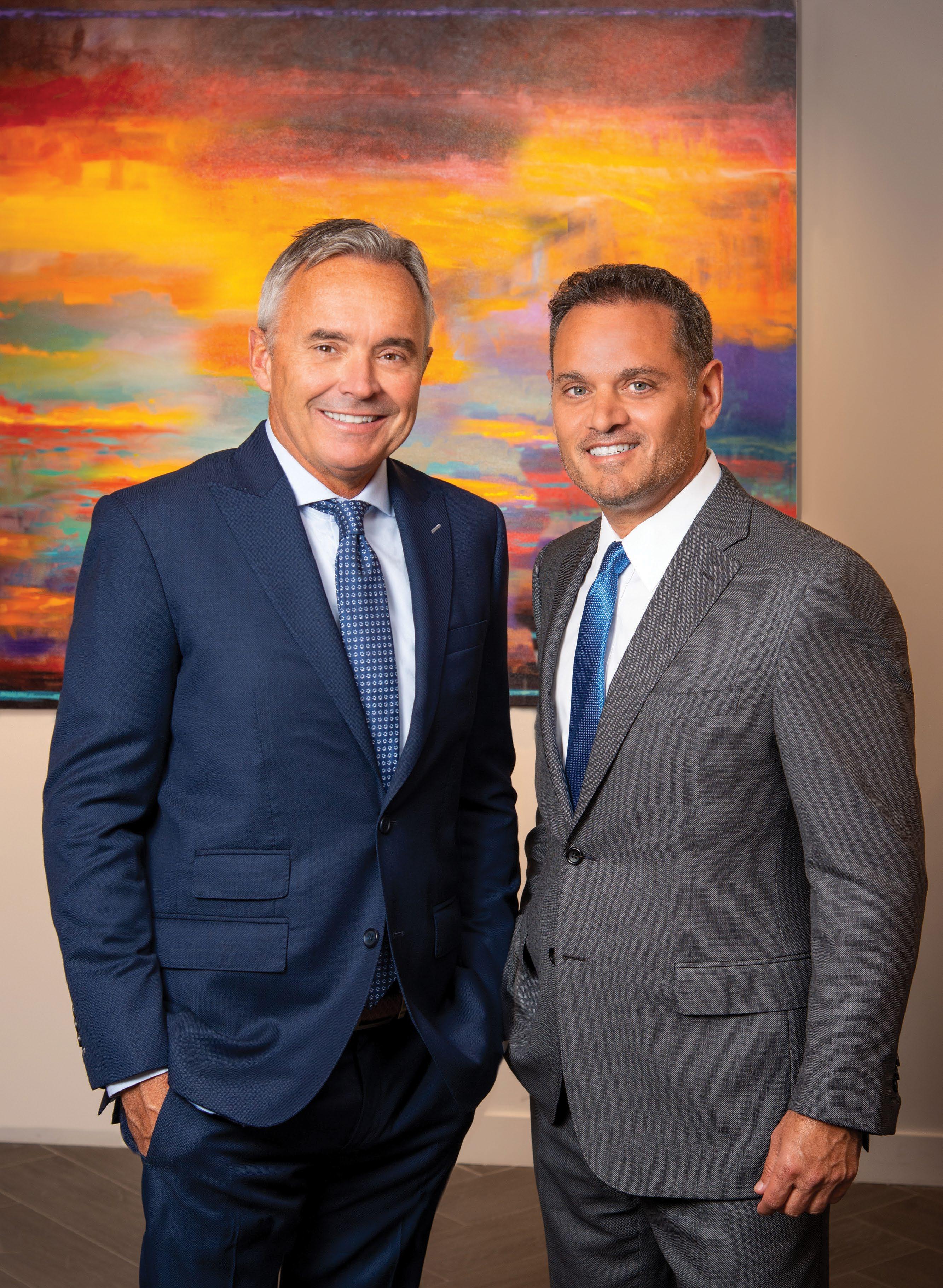
At Bentley & More LLP, we provide aggressive legal representation to consumers and employees across California. Our attorneys are fierce litigators with decades of experience advocating for our clients. While we are effective in resolving many kinds of conflicts outside of litigation, we have a proven track record of fearlessness in taking matters to trial and beyond.

Experienced PERSONAL INJURY LAWYERS 4931 Birch Street, Newport Beach, CA 92660 | (949) 870-3800 | www.bentleymore.com
Referral Fees Paid
OVER $1.5 BILLION WON FOR CLIENTS
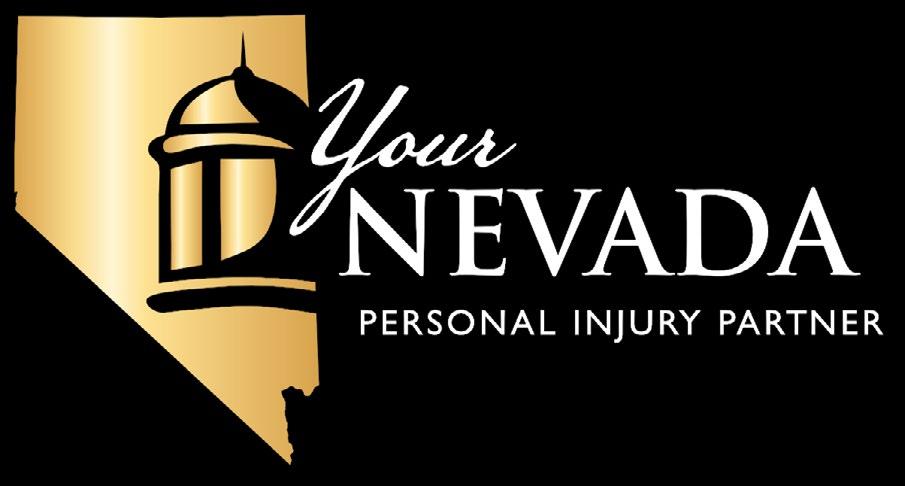







“Rick is one of the best lawyers in the country. I call him every time I have any issue in Nevada and would not hesitate to refer him any type of case of any size.”
~







NEVADA REFERRAL & CO-COUNSEL RELATIONSHIPS NEVADA’S LARGEST & HIGHEST RATED INJURY LAW FIRM 801 SOUTH 4TH STREET | LAS VEGAS, NV 89101 6900 SOUTH MCCARRAN BLVD., #1010 | RENO, NV 89509
C. Michael Alder, Esq., Alder Law, Los Angeles, California, CAALA Past President and Former Trial Lawyer of the Year
PAST RESULTS DO NOT GUARANTEE FUTURE SUCCESS RichardHarrisLaw.com
TABLE OF CONTENTS

Chris Griffiths
Dan Baldwin
Jennifer Hadley CONTRIBUTING EDITORIALISTS
Jennifer Cuculich
Noreen Fishman
Roy S. Ginsburg
Kim M. Keenan
Daniel Lopez
Stefanie Marrone
ADVERTISING INQUIRIES
Info@AttorneyJournals.com
SUBMIT AN ARTICLE Editorial@AttorneyJournals.com
ADDRESS
6 Strategic Planning for Small Law Firms
by Roy S. Ginsburg
10 How Law Firms Can Use Social Media to Boost Their Demand Generation Efforts
by Noreen Fishman
12 Fifteen Tips to Optimize Law Firm Email Marketing Campaigns
by Daniel Lopez

16
22 Ten Essential Elements of a Successful Law Firm
by Stefanie Marrone
24 Five Things a Trial Attorney Can Learn from a Teacher
by Jennifer Cuculich

14 Empowering Leadership and the Importance of Conflict Resolution Skills
by Kim M. Keenan
ATTORNEY OF THE MONTH
16 Joe Nazarian, Pathway Law Firm, Irvine
24 6
Success Is the Only Option
by Dan Baldwin

Editorial material appears in Attorney Journals as an informational service for readers. Article contents are the opinions of the authors and not necessarily those of Attorney Journals. Attorney Journals makes every effort to publish credible, responsible advertisements. Inclusion of product advertisements or announcements does not imply endorsement. Attorney Journals is a trademark of Sticky Media. Not affiliated with any other trade publication or association. Copyright 2024 by Sticky Media. All rights reserved. Contents may not be reproduced without written permission from Sticky Media. Printed in the USA 2024 EDITION—NO.217 EXECUTIVE PUBLISHER Brian Topor EDITOR Wendy Price PUBLICATION DESIGN Penn Creative CIRCULATION
PHOTOGRAPHY
Angela Watson
STAFF
WRITERS
OFFICE 30213 Avenida De Las Banderas Suite 200 Rancho Santa Margarita,
92688 www.AttorneyJournals.com
CA
CHANGES Address corrections can be made via email or postal mail.
Alumni Newsletter
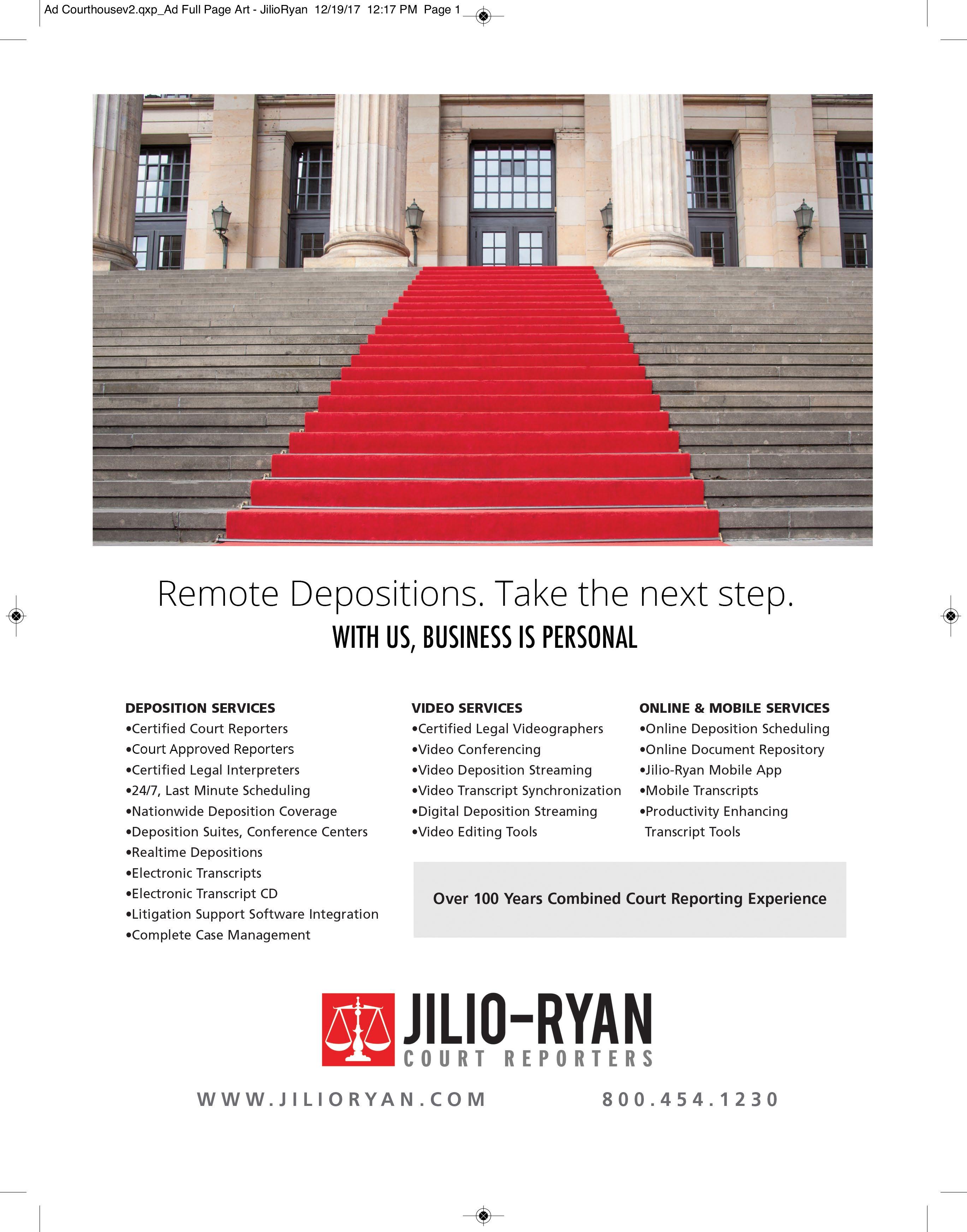

Pressed for time and averse to business jargon, solos and small law firms may be overlooking benefits of strategic planning that include more and better business over the long term.
If a small law firm is perfectly happy with its current status and future outlook, then it does not need a strategic plan. But really, how many firms can claim to be perfectly satisfied? Most small firms want more business and better business. To achieve this goal, these small firms need a strategic plan.
If you don’t know where you are going, after all, any road will get you there. Following many roads in random directions is inefficient and ineffective. If you do know where you are going, you can follow a specific and direct path to success.
When asked what their law firms should accomplish in the next few years, most small-firm leaders will say that they want to be more successful. They will say that they plan to do this by working harder and smarter. These vague aspirations, however commendable, do not constitute a plan.
It is not surprising that many small law firms lack strategic plans. Their counterparts at larger law firms have staff to manage the firm, so that the lawyers can concentrate on clients. Solos and small-firm lawyers must do it all themselves. As a result, strategic planning often takes a back seat to client matters.
WHAT IS STRATEGIC PLANNING?
When attorneys hear the term “strategic planning,” their innate cynicism often takes over. They envision hours spent with a high-priced consultant who spouts arcane business jargon and then presents obvious recommendations. In other words, these attorneys envision a complete waste of their time and money.
Put these preconceptions aside. Strategic planning is not all that complicated. It is simply a process that forces a law firm to pause briefly to carefully consider where the practice has been, where it is today, where you would like it to be in the future— and how you can make this happen.
In other words, strategic planning is a process in which an organization defines its goals and then creates a plan to achieve these goals. The process forces busy lawyers, who are often scrambling to keep up with the day-to-day tasks of lawyering, to actually anticipate the future. Most plans cover one to three years.
Strategic Planning for Small Law Firms
by Roy S. Ginsburg
A successful small law firm strategic plan should consider a firm’s unique culture and vision, emerging trends in the legal market that might provide opportunities, emerging threats in the market that might dictate a change of course, and any needed operational changes.
Plus, a strategic plan can be simple. In fact, less is more. Law firms should not try to accomplish too much, too soon. If initial goals are too ambitious and not reached, firm members will likely get discouraged and resist future efforts. Success in achieving smaller, simpler goals can create the momentum and confidence needed to achieve more difficult goals down the road.
WHY DO LAW FIRMS RESIST?
Common obstacles to strategic planning include:
• Lack of incentive. Strategic planning requires an investment in nonbillable hours, which are not rewarded by most law firm compensation systems. Many firms resist spending time on an activity that brings no reward.
• Lack of consensus. Most law firms are democratic institutions that rely on consensus in order to get things done. Strategic planning may uncover difficult issues and spark differences of opinion. Many firms resist conflict and simply hope that a problem will go away.
• Lack of leadership. Strong leadership is required when dealing with difficult issues. Often, when consensus is hard to achieve, a managing partner operating alone lacks the skills and political capital to effectively manage significant changes.
• Lack of execution. Once created, even the best strategic plans must be implemented. This takes time and resources. Many firms find it easier to ignore a plan and concentrate on client matters.
• Lack of accountability. Strategic plans often impose no adverse consequences for inaction. Even if they do, the firm may not enforce these consequences. When lawyers fail to follow through on a plan’s tactics, they must be held accountable.
6 Attorney Journals Orange County | Volume 217, 2024
STEP-BY-STEP PLANNING
1. Assess status and gather facts. One popular and straightforward strategic planning tool that can be used by a small law firm is a SWOT analysis, in which lawyers identify the firm’s strengths, weaknesses, opportunities, and threats. Most firms will already know what these are, but have never carefully considered them all in one place. Do not get carried away. Identify only the most important elements in each category. To be more thorough, use these questions to trigger discussion.
Regarding the marketplace:
• Who are our competitors?
• What do they do better than we do? What do they do worse?
• What is our reputation in the marketplace? How can it be improved?
• How can we distinguish our firm from our competitors?
Regarding internal issues:
• How would we describe our firm culture?
• What are our core values?
• Do we have the right leadership? Are there gaps?
• Are we getting work out efficiently, effectively, and in a timely manner? Which improvements are needed?
• Are our marketing efforts adequate, or should they be upgraded?
• Do we have the right number of the right kind of employees? Are our training needs being met?
• Are any of our lawyers close to retirement? What changes will this bring about?
• Is the firm the right size or should it be smaller or larger?
• Are professionals and staff compensated fairly and consistently with our culture?
• Does our technology allow us to compete in today’s culture?
Regarding external issues and trends:
• Will any practice areas be impacted by changes in the coming years in the regional economy, legislation and regulation, and/or political climate?
Regarding clients and services:
• Who are our top clients and what kind of work do we do for them?
• How will their needs change in the future?
• Which are our most profitable practice areas?
• Should we reduce or eliminate some areas while growing or adding others, in order to meet client needs going forward?
When assessing client needs, do not rely only on lawyer perception of these needs. Lawyer and client perceptions may not be in alignment. Solicit direct client feedback via confidential interviews (usually for larger clients) and client questionnaires (usually for smaller clients). This information can also be used to identify (and plan for) future opportunities or potential loss of business.
2. Organize and rank. The above discussions will uncover a lot of information. You cannot possibly deal with all of this information at once. To keep the strategic planning process simple and focused, concentrate on perhaps three or four issues. If these issues are not immediately obvious, discuss one further question: What worries us most about the firm’s future? The answer to that question will inform your list.
Some of these issues may be longstanding problems that have not yet reached crisis level, but have been neglected for too long. Thus, strategic planning not only forces small law firms to consider the future, it also motivates them to proactively tackle lingering problems that have been holding them back.
3. Create a plan. With the information gathered and priorities ranked, it is time to create an action plan. This document should be short and simple. It should address:
• What are the three or four realistic goals for this plan?
Don’t be tempted to expand the list. Less is more.
• How will we achieve these goals? What are the specific tactics (including “to-do” lists).
• Who is responsible for accomplishment of a tactic?
• What are the final deadlines and interim deadlines?
• How will the firm measure and reward results?
• Will the firm offer disincentives to ensure accountability?
4. Just do it! The most difficult part of any small law firm strategic plan is execution. The best strategic plan will be wasted if it just sits on the lawyers’ desks gathering dust. To avoid this result, progress towards meeting plan goals must be monitored regularly.
Constant monitoring is critical to hold people accountable, so everyone involved knows who is walking the talk and who is not. Results must be measured and communicated. It is also critical for making revisions. Perhaps some assumptions were incorrect or a tactic is not working as planned. Perhaps a lawyer has left the firm. A strategic plan is a flexible, living document—not etched in stone.
Most often, monitoring is best accomplished by holding regularly scheduled meetings each month. These meetings can be short, allotting just enough time for each person to give an update. If changes need to be made to the plan, a little extra time can be added.
7 Attorney Journals Orange County | Volume 217, 2024
INCLUDING OTHERS
Associates and Staff. There are pros and cons to including associate attorneys and law firm staff in the strategic planning process. On the plus side, they can provide a unique perspective on issues, providing a more accurate and well-rounded picture. Including associates and staff also sends a positive message that the firm is inclusive and values the opinions and contributions of everyone—not just the partners.
On the other hand, associates and staff do not have an ownership stake in the firm and will be less immediately affected financially by any changes that are part of the strategic plan. Also, there may be certain issues that are better kept confidential.
When it comes to inclusiveness, there are no hard-and-fast rules. In the opinion of many experts, expanded participation should be seriously considered for some parts of the process.
Outside Consultants. A disciplined small law firm should be able to work through the strategic planning process on its own, but many find this process far easier when it is facilitated by an outside consultant. A skilled consultant can:
• Keep the process moving along by avoiding side-tracks;
• Rein in uncooperative partners;
• As an objective outsider, obtain more accurate perceptions about the firm from the partners;
• Question long-held (but possibly outdated or incorrect) assumptions and beliefs that cannot be raised by partners due to firm politics; and




• Provide an independent and objective voice to the process when individual lawyers are tempted to favor their own vested interests over the firm’s.
Although all types of businesses engage in the strategic planning process, law firms offer some unusual challenges. It is usually best to retain a consultant who has worked with law firms and is attuned to their economics and business development practices. In addition, an experienced consultant will have a better understanding of the unique lawyer personality and what makes lawyers tick.
For all of the reasons mentioned above, solo practitioners should also engage in the strategic planning process. On one hand, the process is simpler. On the other hand, it can be harder for a solo practitioner to stay on track without peer pressure to do so. Even solos can benefit from the discipline imposed by an outside consultant.
CONCLUSION
Small law firms that want more business and better business cannot achieve these results simply by wishful thinking. They need a direct roadmap to get from where they are today to where they want to be tomorrow. They need to follow that route without getting side-tracked. They need a strategic plan. n

Roy S. Ginsburg is an attorney coach and consultant who helps lawyers achieve practice development goals and career satisfaction. Roy is a frequent CLE speaker and consults with firms and individuals nationwide. Learn more at www.royginsburg.com.


















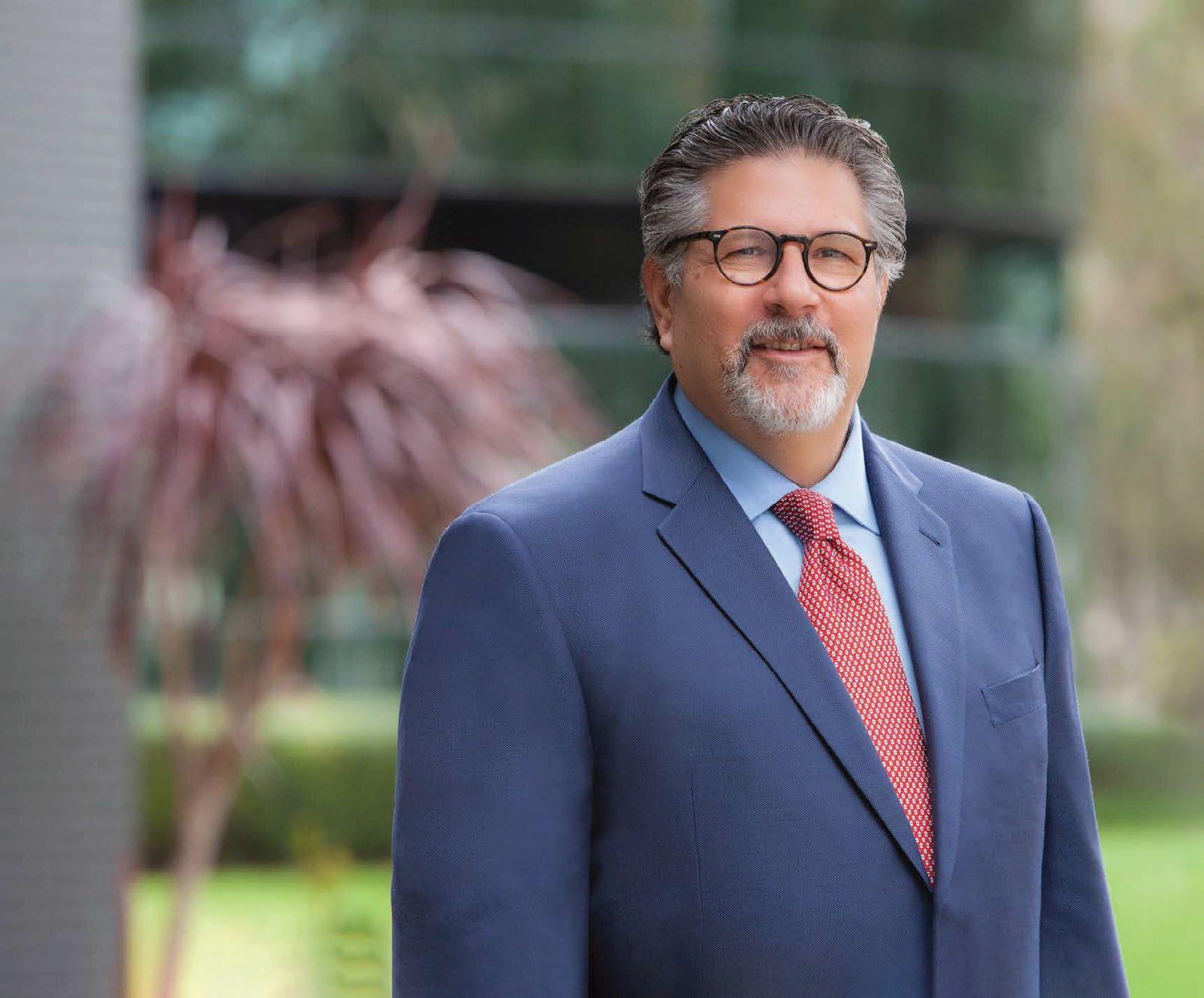












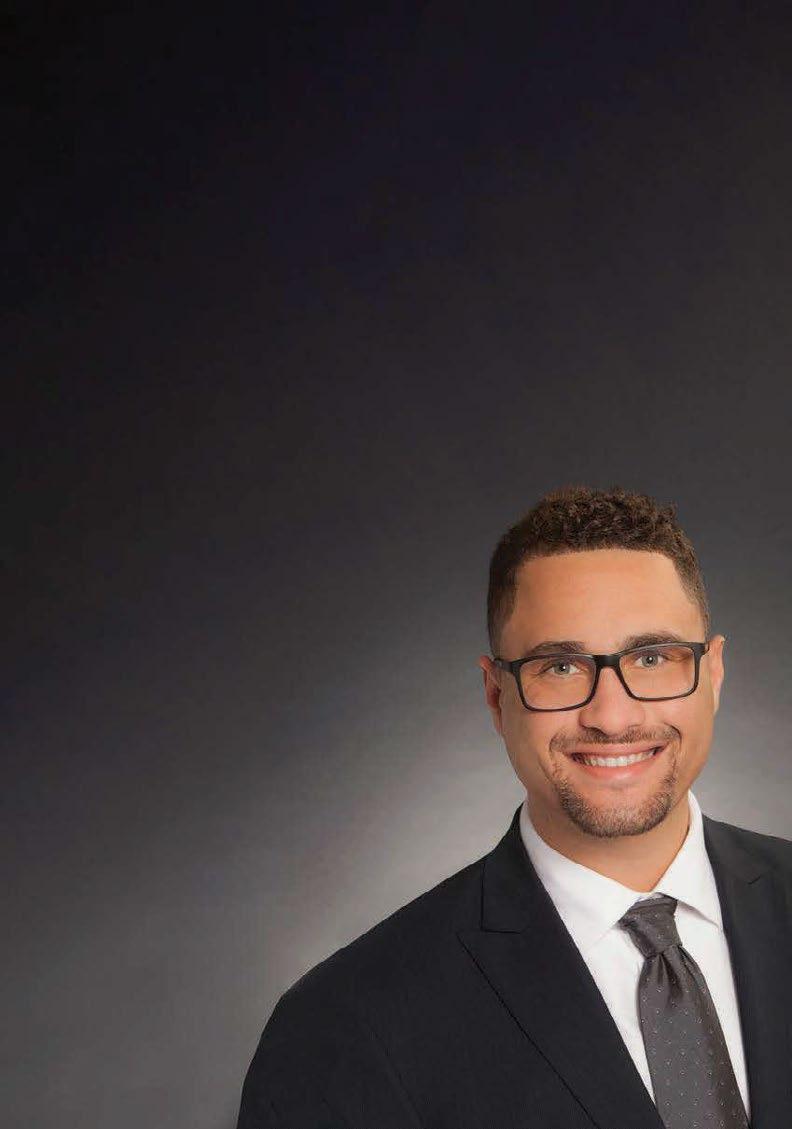



8
PARTNER
Paul D. Woodard
PARTNER mschechter@bsllp.com Butterfield Schechter LLP is San Diego County’s largest firm focusing its law practice primarily on employee benefit legal services. Our experience in employee benefits law and business law provides creative solutions for the most pressing business concerns. We are also dedicated to employee ownership and know all things ESOP (Employee Stock Ownership Plans). Learn more at www.bsllp.com. Helping You See ERISA and Employee Benefits Law Clearly Practice areas include: ESOPs - Pension, Profit Sharing, 401(k) Plans - ERISA Litigation - ERISA Compliance - IRS and DOL Audits - Nonqualified Deferred Compensation Plans - Stock Options Plans - Business Transaction & Succession Planning - Qualified Domestic Relations Orders (QDROs) FIRM FOCUS ON EMPLOYEE BENEFITS LAW Attorney Journals Orange County | Volume 217, 2024
Corey F. Schechter


In a world where a hashtag can break a story and a tweet can shape an opinion, the power of social media remains unmatched. While the legal industry has been slow to adopt these digital landscapes, there’s a rising tide of attorneys and legal professionals who recognize social media’s sea change opportunity in demand generation.
For legal practitioners, demand generation isn’t a new term, but its playbook is constantly evolving. Unlike generic digital marketing strategies, demand generation for legal services is the art of building awareness and fostering needs throughout the client’s development funnel. It’s the foundation for every touchpoint with your potential client, from initial awareness to loyalty and advocacy.
But how does one channel these principles into the tweetable, share-worthy, and likable social media content that can make attorneys market leaders?
The Evolution of Demand Generation
In the legal world, demand generation is the lifeline that keeps firms thriving. Traditionally, this has played out through inperson networking, sponsorships, and, of course, referrals. Yet today, demand generation is more complex and nuanced. It demands engaging and educating potential clients before they’ve even stepped through your firm’s doors.
By understanding your audience’s needs and creating content tailored to address those pain points, attorneys can position themselves as not just legal advisors but also trustworthy consultants. Social media, with its reach and targeting capabilities, is the perfect tool to wield in this endeavor.
Diving into Legal Demand Generation with Social Media
Legal services, unlike most consumer products, aren’t something you buy every day. They’re something you need, often in your most challenging times or moments of opportunity. Social media is about understanding those needs and making sure your legal expertise is what your audience reaches for when the time is right.
Many law firms struggle with digital demand generation because they misalign online behavior with in-person expectations. However, as the online community grows, and
How Law Firms Can Use Social Media to Boost Their Demand Generation Efforts
by Noreen Fishman
Millennials and Gen Z are becoming the new consumer powerhouses, the disconnect can be bridged. These tech-savvy clients are more likely to seek legal counsel via online channels, which makes quality content, accessible through social media, an essential hook to secure their attention.
For law firms, social media is not just about advertising; it’s about storytelling and brand-building. Each platform should be seen as a stage on which to share insights, updates, success stories, and industry knowledge that resonate with different segments of your audience.
Leveraging the Legal Mindset on LinkedIn
LinkedIn, with its professional demeanor, might seem like the perfect fit for legal marketing – and it is. But a common mistake is to treat the platform like a mere digital bulletin board. Instead, lawyers should take advantage of its networking power to establish themselves as both thought leaders and approachable advisors in the legal comings and goings.
Your LinkedIn strategy should encompass a mix of organic and paid methods. This can be as simple as sharing firm updates and professional accomplishments to sponsoring articles that provide genuine value to your audience and potentially can reach new clientele. And, for firms that cater to businesses, LinkedIn is a goldmine. It’s a place where legal updates meet professional advice, boardroom quagmires meet out-of-court resolutions, and where your ‘Connections’ become ‘Clients’.
Crafting a Personal Brand on Twitter/X
The fast-paced world of Twitter/X may seem at odds with the slow grind of the legal field, but here’s where your firm’s personal brand can truly shine.
Twitter/X is about engagement and speed. It’s where news hits first and reverberates loudest. Law firms should capitalize by aligning their brand with ongoing conversations. Engage in topical threads, share insights on emerging legal trends, and interact with potential clients and industry voices. In the Twitterverse, conversation is content. Legal topics on Twitter/X often snowball into movements. Lawyers’ engagement with trending hashtags—#JusticeForAll, #PrivacyMatters or #TechLaw—can positively position your firm in eyes that might not have landed on you otherwise.
Attorney Journals Orange County | Volume 217, 2024 10
Storytelling on Instagram
Instagram, the visual platform, is not just about feeding your followers pretty pictures of courtrooms and case files. Here, you tell the stories behind the suits and the struggles.
Behind every legal case, there’s a human story. Use the Story feature to offer glimpses of the people you advocate for or the causes you fight. Share testimonials or moments of legal victories unfolded in your eloquent captions and professionally shot images. Instagram can be a powerful advocate for the causes your firm champions. Whether it’s community service, social justice, or legal education, weaving these moments into your Instagram content doesn’t just bring empathy to your brand; it powers demand through the heartstrings.
Finding Your Firm’s Voice on Facebook
Despite appearing as the old guard in the fast-evolving social media scene, Facebook’s potential for generating legal leads is unmatched. Its vast and diverse user base offers law firms a unique chance to connect with potential clients personally. Facebook is where legal advice is exchanged, community engagement can spark inquiries, and law firms can show their approachable side with engaging content.
Facebook stands out for law firms wanting targeted ads due to its advanced targeting features. Through posts, live Q&A sessions, or polls, lawyers can simplify legal concepts, offer advice, and make their practice more relatable. This direct engagement builds trust and positions the firm as a community pillar. By addressing local issues, updating on legal changes, and joining discussions, a firm can boost its visibility and reputation, converting followers into clients.
Maximizing Reach With TikTok
TikTok, a platform known for its viral trends and creative content, presents a unique opportunity for law firms to tap into a younger demographic and generate demand in a way that is both informative and engaging. The key lies in harnessing the power of short, compelling videos to demystify legal processes, showcase the human side of the legal industry, and highlight the firm’s expertise in a format that’s easy to consume and share.
For law firms venturing into TikTok, the focus should be on creating content that educates while entertaining. Think bite-sized legal tips, myth-busting series, or behind-the-scenes glimpses into the life of an attorney. These can not only humanize your firm but also help viewers understand complex legal concepts in a straightforward manner. Participating in trending challenges or using popular music can increase your content’s reach while keeping your firm relevant and relatable.
Interactive features like polls, Q&A sessions, and TikTok’s duet function invite direct engagement, turning passive viewers into active participants in the legal conversation. By balancing professionalism with personality, law firms can use TikTok to build a brand that resonates with a wide audience, emphasizing accessibility and trustworthiness.
Mastering Multi-Channel Engagement
In the cacophony of social media, finding your law firm’s voice and delivering a harmonious message across platforms is no easy feat. Yet, it’s this mosaic approach that can turn a casual follower into a lifelong client.
Content is key on social media, and for law firms, it’s often the kind that’s long-form, well-researched, and legally-vetted. Whether it’s blog posts, infographics, videos, or podcasts, content should be informative first, engaging second, and promotional as an afterthought. It’s important to remember that social media is about being just that—social. Take the time to listen to your audience, engage with their comments, and shape your content to their conversations. Remember, it’s not just about talking; it’s about fostering dialogue.
Tools of the Trade for Legal Social Strategies
Like any other endeavor, the right tools can make the job not just easier but more effective. Here are a few to consider integrating into your legal social media strategy.
Analytics and Insights
Understanding the metrics behind your social media campaigns is crucial. Look for tools that provide in-depth insights into your content’s performance—what works, what doesn’t, and why.
Scheduling and Automation
For a busy law firm, maintaining a consistent social media presence can be daunting. Scheduling tools can batch your content and keep your channels humming even when your caseload is overflowing.
CRM Integration
Customer Relationship Management isn’t just for corporate conglomerates. Local firms can benefit from CRM’s ability to finetune their social media targeting and engagement so that every post is helping build more than just demand, but relationships.
Takeaway
Social media isn’t just the future of law firm marketing; it’s the now. The attorneys who master this platform aren’t just keeping up with the times; they’re in a unique position to define them. They’re the ones translating the call for justice, protection, and resolution into content that educates, engages, and entrusts their client base.
Give your law firm a fighting chance in the digital arena. Start posting, sharing, and engaging today. Because in a world where ‘viral’ isn’t just a medical term, it’s a marketing imperative, the legal minds who go social are the ones who’ll go the furthest. n

Noreen Fishman is the director of client services at Good2bSocial. Her primary responsibility is to help clients achieve their digital marketing goals. This includes managing the Good2bSocial team, ensuring constant communication with clients and updating them on their progress. Connect with Noreen on LinkedIn or www.good2bsocial.com.
Attorney Journals Orange County | Volume 217, 2024 11

Email has been an essential part of professional marketing since it was invented. Though tools have gotten more sophisticated and the best practices for using them have evolved, email is still one of the most effective marketing channels available. Because of that evolution, what worked 5 years ago no longer works today. There is more noise than ever before and prospects have gotten savvier about filtering email. This has led to an increase in emails that are deleted before they’re even read. Here are a few things that you can start doing—today—to boost engagement and breathe more life into your law firm’s email marketing campaigns.
Law Firm Email Marketing Tips
1. Offer more opt-in opportunities. Keep growing your law firm’s email marketing list by finding new ways for people to subscribe. Doing so won’t necessarily help your emails get opened more, but in a numbers game, a larger (quality) list will perform better. Plus, today’s laws dictate that only people who have opted in to receiving your email should get them, so creating more spaces for people to do that helps keep your list clean.
2. Understand subject line best practices. Your email’s subject line is a first impression that makes the difference between a user clicking to read more or letting your email sit in their inbox. Always remember that subject lines are short and get cut off around 55 characters (even less for mobile). Try to keep the most pertinent information in the front of your subject line. Also, communicate the value proposition of your email right in the subject line. Why should users want to open it? What’s inside that makes this email so important? Focus on offering a solution and communicating that in those 30-55 characters.
If you have space, you can even add personalizations into the subject line, to make it even more compelling.
3. Focus on preview text. This is the snippet of copy that is pulled from the body of your email and displayed with the subject line. Most emails have a line or two like “View
15 Tips to Optimize Law Firm Email Marketing Campaigns
by Daniel Lopez
this email in a web browser”, but it’s important to actually optimize this copy. Try to keep this section to less than 90 characters, and create either a second headline that is attention-getting or a very brief summary of what’s in the email (why should anyone bother to open it?). Use relevant keywords and a sense of urgency—but don’t simply repurpose your subject line.
4. Add personalization. As we mentioned earlier, personalization can be pretty meaningful. After all, no one wants to truly believe their inbox is full of mass emails that go to thousands of contacts. Why should your user believe your email is relevant to them if it’s clearly something that was sent to tons of other people? Add personalization like a first name entry in the greeting, subject line, preview text, etc. Or if applicable, include their company name in the copy as you discuss your points in second person. Above all else, make the personalization seem natural.
5. Try a re-engagement campaign. Use your email tools to pull a list of those individuals who haven’t been active with your firm in a while. Consider these leads that have gone cold. Try to win them back by sending messages along the lines of “It’s been a while.” You can show them what they’ve missed by including valuable content like your latest blog posts or webinar recordings. Remember that if even one prospect re-engages with you, the campaign was worth your time.
6. Choose your visuals carefully. Images are tricky in email because they can add visual interest, which makes them more likely to be read, but some email providers actually block graphics. One trend over the past couple of years has been creating simpler, plain-text emails. If you’re going to use an image, make sure you have appropriate text along with it. That means that if there is text within an image, you create separate text that replicates it. Also, avoid high-resolution photos. Though they might look better, they take longer to load, particularly on mobile or slow internet speeds. That can be frustrating or even lead to a quick deletion.
12 Attorney Journals Orange County | Volume 217, 2024
7. Leverage exclusivity. You’d be surprised how much engagement your emails can garner when users are offered something exclusive they can’t get anywhere else. What is an exclusive offer or item you can share with your loyal subscribers to make your emails worth opening? Maybe it’s a free eBook, some industry news, a free consultation, etc. Remember to remind them this offer is only for email subscribers and watch your open rate and click-through rate rise.
8. Optimize for mobile. 81% of emails are now opened on mobile devices. Today’s world is mobile, and it’s a mistake not to take that into account when designing emails. The majority of people end up checking email on their devices, not a desktop. Use responsive email design to ensure that everything renders properly across any device. Remember what we said about images, too—you don’t want to include anything that is going to make the email take longer to load. Preview emails on your mobile device before they go out to double-check that they look good on mobile devices.
9. Play around with send times. There is no set schedule that will lead to optimal results. That’s why we suggest testing and seeing what works for your firm. Too many emails become pretty easy to ignore and also tend to increase unsubscribe rates. Too few emails makes your firm pretty forgettable and also ensures you don’t have a lot of data to build future campaigns. In general, fewer, but properly targeted emails will perform better.
And don’t forget to test which day of the week and time works best for an improved open rate.
10. Segment campaigns. Hopefully, this is something you’re already doing, because segmented lists lead to 100% more clicks. There are many ways to segment lists, such as by geographic location, job title, area of interest, company size, etc. It’s particularly important to segment people who interact with your content so that you can send communications that are relevant to their stage in a client journey with you. Automation comes in really handy here (for a more robust guide to automation, check out our guide to marketing automation for law firms).
11. A/B test all the time. You’d be surprised how much difference a small change can make. Test things like keywords, headlines, colors, fonts, button placements, etc. You can also test the time of day that your law firm sends emails or what emails link out to. Remember to only test one small tweak at a time, so that you can properly attribute results to the correct element. As you learn from your A/B tests, optimize future emails and keep the process going. Ideally, you will always have some sort of test running as part of your ongoing email marketing.
12. Provide clear CTAs. Your email campaigns are only as successful as your ROI, and a successful ROI cannot happen unless users are taking next steps after engaging
with your emails. Make your call to action very clear by using bold text, different colors, or better yet a bold and enticing button. Make sure the copy of your CTA makes the value proposition of taking next steps very clear. Communicate what a user will get out of taking action. And make sure next steps are something easy like a short lead gen form, or an easy-to-use scheduling calendar. No one wants to fill out a form with 10+ fields.
13. Humanize your sender. Again, users don’t want to receive mass-produced emails from robots. They want to get back to human connection. Make sure your sender is the name of someone from your law firm, and the from address is the real address of that person. Also, make sure to sign off with a natural conclusion and signature like you would any other email, always signing off with the sender’s real name. This humanizes your email and lets users know there’s a real person on the other end of things.
14. Track and analyze performance metrics. Monitoring the performance of your email marketing campaigns is crucial for understanding what resonates with your audience and what doesn’t. Utilize analytics tools to track open rates, click-through rates, conversion rates, and bounce rates among other metrics. Analyzing these metrics allows you to identify trends, refine your strategies, and make data-driven decisions to optimize future campaigns. Remember, continuous improvement is key in staying relevant and engaging to your audience.
15. Maintain email list hygiene. Regularly cleaning your email list is essential for maintaining its health and ensuring your messages reach your intended audience. Remove inactive subscribers who haven’t engaged with your emails over a certain period. This not only improves your engagement rates but also protects your sender reputation, reducing the likelihood of being marked as spam. Consider sending a re-engagement email before removing inactive users; sometimes, a well-crafted message is all it takes to bring them back.
Takeaway
Use the tips above to improve your law firm’s email marketing open rates, conversions, and click-throughs. Today’s email recipients might be a little harder to impress, but they’re still a reliable source of lead generation. n

Daniel Lopez is an experienced Digital Marketing Strategist at Good2bSocial with a demonstrated ability to develop creative integrated marketing campaigns for clients across industries. Mr. Lopez’s understanding of the digital marketing funnel allows me to create strategic roadmaps for clients that effectively incorporate social media, email marketing, SEO, content marketing, and more for tangible business results. Learn more at www.good2bsocial.com.
13 Attorney Journals Orange County | Volume 217, 2024

• Websites • Presentations • Social Media • Email Marketing Writing, graphic design and marketing strategy for … • Branding • Press Releases • Print & Digital Ads • Business Cards • Newsletters • Blog Posts • Marketing Campaigns • Brochures, Flyers & More We’ll Help Your Firm Get Noticed! Women-Owned Business • 215-550-1435 • penn-creative.com



•

PRACTICE AREAS Personal Injury Rideshare Sexual Assaults Motorcycle Accidents Dog Bites Car Accidents Slip and Falls Truck Accidents Drunk Driving Accidents Rideshare Accidents Bicycle Accidents Wrongful Deaths 5 STAR REVIEWS: REAL PEOPLE. REAL INJURIES. REAL MONEY. • We Offer FREE CONSULTATIONS • Available 24/7 • Rated 5-Stars Across the Board
Voted Best in Orange County • Millions Recovered for Our Clients
98% Success Rate
•
•
Client Focused, Results Driven
You Have Injuries, We Have Answers WHO HURT YOU? $1.5M AUTOMOBILE $3.25M PERSONAL INJURY $1M TRIP & FALL $925K EMPLOYMENT LAW $865K TRUCKING $600K MOTORCYCLE $550K AUTOMOBILE $475K DOG BITE SANTA ANA 2090 N Tustin Ave, Suite 250 Santa Ana, CA 92705 RIVERSIDE 4193 Flat Rock Rd, Suite 200 Riverside, CA 92505 WEST HOLLYWOOD 925 N La Brea Ave, Suite 521 West Hollywood, CA 90038 BAKERSFIELD 2601 Oswell St, Suite 206 Bakersfield, CA 93306 LAS VEGAS 3651 S Lindell Rd, Suite D169 Las Vegas, NV 89103 REFERRAL FEES PAID RAZAVI LAW GROUP • (949) 500-1926 • ali@razavilawgroup.com • razavilawgroup.com AWARD-WINNING ACCIDENT ATTORNEYS
•
SUCCESS IS THE ONLY OPTION
by Dan Baldwin
Failure is not an option” is a phrase made popular in recent motion pictures, but attorney Joe Nazarian and his team take a more aggressive and a more positive approach with “success is the only option” as their corporate philosophy. “Speaking for myself and my team, we don’t back down—period. We never give up and we’ll fight as a powerful voice for our client regardless of what the case is about. We’ll do everything that it takes. That’s my bias and that’s my commitment.”
Nazarian founded Pathway Law Firm, PC, a personal injury firm in 2010. He is licensed to practice in California, Texas, Washington DC, and his license in Arizona currently pending approval. With offices throughout the state of California, and Texas, Nazarian is planning an expansion into the Valley of the Sun market of Phoenix. The firm employs approximately 35 people, including Nazarian and three attorneys. He has plans for expanding their practice areas to Mass Torts and Employee Rights.
Nazarian credits the success and rapid growth of his firm to an approach that places full emphasis on each client as a person. His team focuses on investing time with each client and his or her family, spending hours in serious and personal communication. Rather than just relying on an initial conversation, his attorneys truly dig into each case, getting to the “nitty gritty” of each situation so they can engage in real conversation to develop the best, mostefficient course of action.
The firm also has a technological advantage. While many firms are mired in the past, Nazarian embraces the future in a dramatic and effective way. He custom-built a software system that helps his staff keep the client’s case well organized, up-to-date, and thoroughly prepped for the
next step in the process of their case. The system is fully accessible to each client, who not only can communicate with their attorney through this system, they can upload documents, pictures, reports and other materials important to their case. The client is able to be fully informed of their case 24/7. Nazarian says, “Ultimately, our firm’s approach is rooted in integrity, empathy, and a steadfast commitment to achieving the best possible outcomes for our clients. We understand the challenges they face—because my family went through many of those challenges too—and we are dedicated to helping them navigate through difficult times with dignity and respect. A lot of other firms look at cases as dollar signs; we look at a case in terms of how can we actually help this person. What can we do to make a difference in their life?”
TAKING IT DOWNTOWN
A typical case, and one that proves the team’s diligence, involved a nine-year old who was jay walking when hit by a vehicle. The driver immediately fled the scene making this a hit-and-run incident. The frightening incident was witnessed by their client’s mother and her sibling. The girl was lifeless when an ambulance arrived. Miraculously, the first responders resuscitated her and she was airlifted to the local children’s hospital. Their client spent nine months in Children’s Hospital and other rehab facilities having to relearn how to learn how to walk, talk, eat, and function as a healthy human being.
Nazarian and his team hired investigators who canvased the area, speaking to local business owners, residents and others in the neighborhood. Eventually they discovered a video of the incident from which they were able to find the
16 Attorney Journals Orange County | Volume 217, 2024

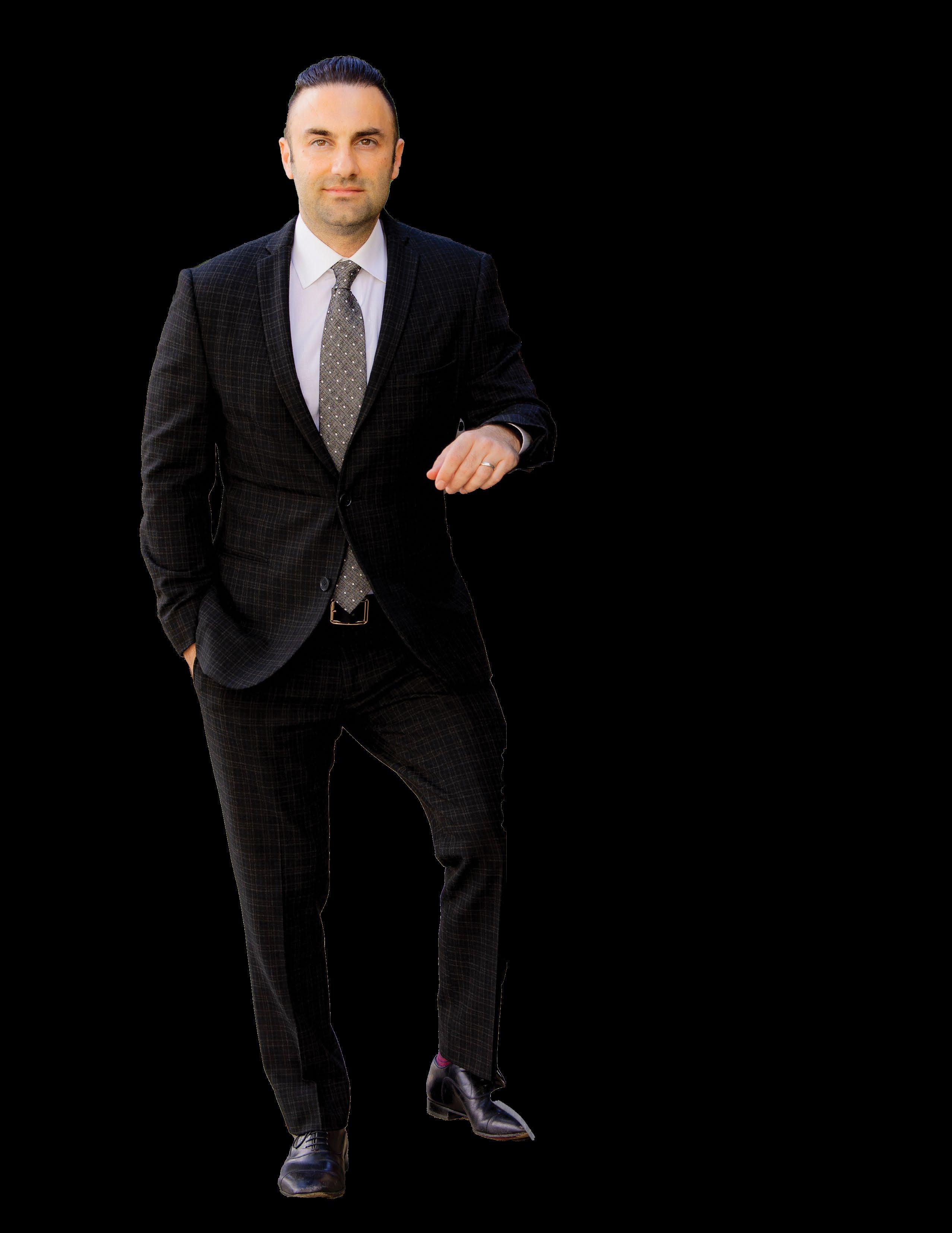 ATTORNEY OF THE MONTH 2024
Joe Nazarian, Founder and Managing Partner of Pathway Law Firm
© Loreen Sarkis
ATTORNEY OF THE MONTH 2024
Joe Nazarian, Founder and Managing Partner of Pathway Law Firm
© Loreen Sarkis
hit and run driver who was later arrested. Additionally, their investigation revealed that the exact stretch of the road where this took place had multiple prior and subsequent vehicle and pedestrian accidents. It was a dangerous city street for drivers, passengers and pedestrians.
They took the case to the city where the responsible officials deflected and denied that the city had any responsibility. Through the course of litigation, investigations, and expert witnesses they proved that the city knew the area was dangerous. The attorneys recovered enough money for their client so that her medical needs were covered and her life moving back toward normality.
Nazarian’s willingness to “go downtown” with cities, insurance companies, organizations, and other attorney firms is an essential core element of their business profile. A significant portion of the firm’s clients are Hispanic and a lot of them are immigrants. They’re in a completely new environment and they’re scared of a lot of different things. They face, and often have a palpable fear of repercussionsbased misconceptions and faulty knowledge. More than just a resource, Nazarian’s firm is in effect a much-needed legal support system.
“The greater majority of our clients are from the Hispanic Community, usually those who immigrated to the U.S. for a better life for themselves and their family. If they get injured, in order to ensure they do not get taken advantage of by the system, insurance companies, and so on, we step in. I’m nice until I’m not. Mutual respect goes a long way. I don’t like when others try and take advantage of a situation or people and that’s when Mr. Nice turns into Mr. Not-So-Nice. But if that’s what it takes to get justice for my client, that’s the way I have to approach the situation,” he says.
AN INCITING INCIDENT INCITES A CAREER
Nazarian focuses Pathway Law Firm, PC on many cases other firms simply don’t want because they think they are “small cases” or that the liability is difficult. “Most firms want the ‘stars to align’ when taking on a case and shy away from difficult situation where they will have to go to battle with an insurance company and their attorneys. We leave no stone unturned. We will invest the money into a case where necessary to ensure we do the best for our clients,” Nazarian says.
Nazarian saw some of the struggles that his family and other families faced when he his dad, three brothers and his grandparents moved to the U.S. He saw firsthand how the language barrier and the differences in the cultures often threw them back. The transition was challenging for
them to acclimate and develop an understanding of a wide range of new things.
In 2005, he learned early the importance of legal representation in society and also that it would be his calling in life to be one of those representatives while attending his cousin’s high school graduation ceremony. A peaceful assembly was disrupted when his father, for no reason other than looking Middle Eastern and speaking English with an accent, was brutally attacked. He was savagely punched in the mouth by another guest who used brass knuckles to emphasize his point. As Nazarian’s father fell to the ground, the back of his head hit the hard concrete floor causing a brain aneurysm.
Since immigrating to the U.S., Nazarian’s father owned his own business. He worked seven days a week from morning to night and on his feet all day to provide a better life for his family. After this attack he was unable to work for a considerable time before he was able to back up and running. Medical bills mounted. His business suffered. But he never complained. He pushed forward, got better and back to work—even though it was extremely difficult. The work ethic and the drive the man showed was an inspiration and something Nazarian always looked up to.
When the case came before the District Attorney, the man decided not to press criminal charges against the attacker. The family refused to sit idly by. They spoke to many different attorneys and each one turned them away for many different reasons. At last, they found an attorney who stood by their side and helped them go after the attacker. Nazarian cites a number of questions this attorney asked that have guided his own path. Can you get the actual attorney on the phone with a simple phone call? Can you talk to him or her about what the path that they see for your case? Ask whatever questions that you might have? Have fast have access to that person? Or are you talking to an assistant that entire time? What path are they leading you down? Are they leading you down the path of quickest resolution, which makes the most sense for the law firm? Because they’ll turn a quick profit? Or are they leading you down the path that’s best for number one, your physical and mental recovery? And number two, the resolution that’s going to make you whole you and your family?
“This attorney was there for us whenever we had those and a lot of other questions. He told us the good, bad and the ugly. He did not let the system and my father’s attacker’s attorney take advantage of us or the system. He, just like my father, did not back down. From this experience I knew that I too wanted to be able to help those that are in need not to get taken advantage of,” Nazarian says.
18 Attorney Journals Orange County | Volume 217, 2024
My team has been with me from day one. We don’t have turnover in our office. Our environment is such that everyone is on the same mission—do right by the client.”
Joe Nazarian

Those experiences helped develop Nazarian’s management philosophy. The basis is just to get things done for the client, to do what is best for them, and often, their families and their personal and professional well-being. The attorneys are always available to their clients and are always fully up-to-date on the needs of those clients. He maintains an open-door policy with his employees. “My team has been with me from day one. We don’t have turnover in our office. Our environment is such that everyone is on the same mission—do right by the client.”
Maintaining that commitment will be an ongoing challenge in a rapidly changing legal, political and economic environment. Of the biggest challenges Nazarian sees in upcoming years is the attempt to cap attorney’s fees on a contingency basis in California. It’s completely the two biggest proponents behind it are some of the insurance companies and the car manufacturers, who are concerned about the lemon law aspect of things, Nazarian says. “They’re misinforming the public in such a way that it’s going to actually be a deterrent for attorneys to take on cases. It’s not going to make economic sense for
© Loreen Sarkis Attorney Journals Orange County | Volume 217, 2024 19
attorneys to jump in and fight for people who were injured, but not significantly. It’s not going to give an attorney the incentive to take on a quote-unquote ‘smaller case.’ And all that’s going do is just give more opportunity to these insurance companies to take advantage of innocent people. They’re not going to compensate victims fairly. So that’s one of the biggest challenges that I see that’s going to be coming up for all attorneys who are working on contingency. It’s not just personal injury attorneys who will be negatively affected. Even in employment cases and Social Security, disability and things of that nature will be hit. You can count on it that we will be on the right side of that battle.”
MEANWHILE, OUTSIDE THE OFFICE…
Nazarian grew up in San Diego. He met his future wife in 2018 and they were married in the leap year of 2020, “just before the world essentially shut down,” he says. “She is the guiding light that has illuminated every path we’ve walked, both personally and professionally. Her support has been the cornerstones of our success.”
They welcomed twins, a boy and a girl, into their world in October of last year. “Zak and Gemma are a blessing and they have further driven me to cherish the values my parents instilled in me and strive to instill the same in them such that they too can make an impact,” he says.
He enjoys spending time with friends and family and appreciating the beautiful weather of southern California. Nazarian enjoys running outside and lifting weights in a local gym. He believes that a healthy body and mind are essential to being an effective attorney and family man.
“I continue to dedicate myself to building Pathway Law Firm and continue my efforts to only represent and protect the interests of real people and their families, not multi-billion-dollar insurance companies. I want Pathway Law Firm to outlive us all and be something Americans nationwide know they can trust and turn to when they need our help.” n
Contact Joe Nazarian
Pathway Law Firm, PC 7545 Irvine Center Drive Irvine, CA 92618 (310) 414-3899
www.pathwayfirm.com
EXPERIENCE
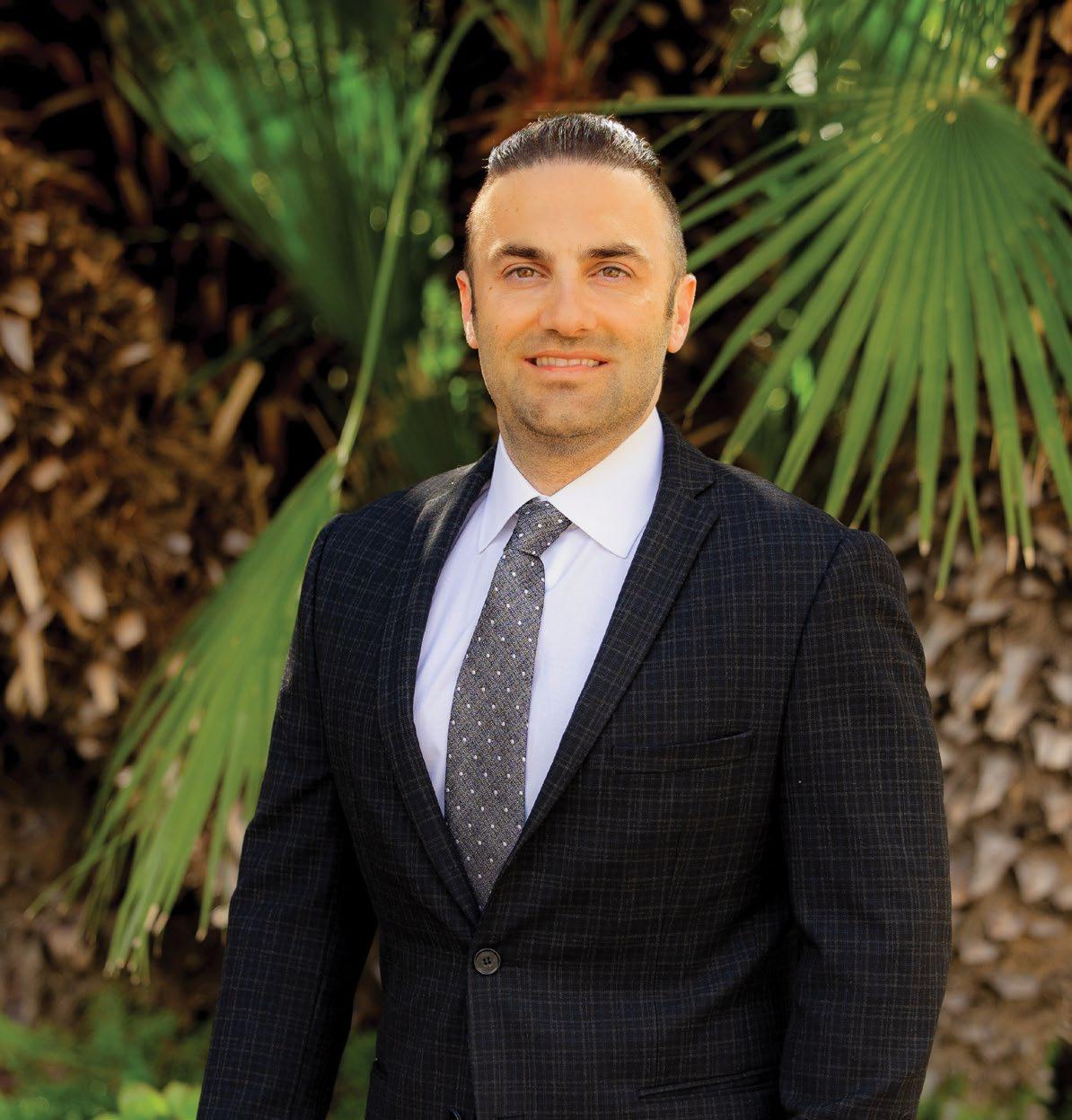
» EDUCATION
• William Mitchell College of Law, 2009
• University of California – Riverside, 2005
» MEMBERSHIPS & ASSOCIATIONS
• American Association for Justice Member, 2015 - Present
• Consumer Attorneys Association of Los Angeles Member, 2010 - Present
» AWARDS
• Super Lawyers – Rising Star, 2015 - 2018
• Top 40 Under 40 – National Trial Lawyers, 2017 - 2019
• Million Dollars Advocates Forum
• Multi-Million Dollar Advocates Forum
» BAR ADMISSIONS
• California State Bar, 2010
• Texas State Bar, 2017
• District of Columbia Bar, 2020
• Arizona State Bar (Pending)
» PROFESSIONAL ASSOCIATIONS
• Consumer Attorneys Association of Los Angeles, 2010 - Present
• American Association of Justice, 2010 - Present
• Los Angeles Trial Lawyers’ Charities, 2010 - Present
» LANGUAGES
• English
• Spanish
• Farsi
20 © Loreen Sarkis Attorney Journals Orange County | Volume 217, 2024



To schedule, contact Haward Cho: (213) 683-1600 and (619) 233-1323 or haward@adrservices.com Monty A. McIntyre, Esq. Mediator, Arbitrator & Referee ADR Services, Inc. Short summaries (one-paragraph), organized by legal topic, of every new published CA civil case, helping CA attorneys save time, win more, and make more money. Monthly, quarterly, annual, and annual practice area publications are available. Subscribe at www.cacasesummaries.com Are You a Business Owner OR Attorney With a Client Who is Dealing With an ADA Violations Lawsuit? Don’t Panic! (ACT) Now! NATIONWIDE ADA COMPLIANCE SOLUTIONS We have the answers and solutions to all of your ADA compliance issues for your business and/or client. 2041 Riviera Drive Vista, CA 92084 (760) 940-6106 adacomplianceteam.com ADA Compliance Team, Inc. (ACT) COMPLIANCE SURVEYS / ACCESSIBILITY SOLUTIONS / TRANSITION PLANS 21 Attorney Journals Orange County | Volume 217, 2024

Creating an engaging and informative alumni newsletter is a crucial component of a law firm’s alumni relations strategy. Not only does it serve as a bridge reconnecting former colleagues with the firm, but it also fosters a sense of community and ongoing engagement among the alumni network.
The key to a successful alumni newsletter lies in striking the right balance between sharing news about the firm and focusing on content that focuses and resonates with alumni. Here are some essential components and creative ideas for what to include in a law firm’s alumni newsletter.
• Welcome message. Start with a personal touch—a welcome message from the managing partner. This message can reflect on recent achievements within the alumni network, share the firm’s vision for the future and offer a warm greeting to reinforce that alumni will always be part of the firm’s community at large.
• Alumni spotlights. Feature profiles of alumni who have made significant strides in their careers, whether in the legal industry or beyond. These spotlights not only celebrate the achievements of former colleagues but also provide current employees and alumni with inspiring stories of career progression and success. An easy way to do this is to email the selected alumni a choice of answering three questions from a list of 10 or so. They can complete the profile at their leisure. Consider doing these as a Q&A series and posting them on the firm website and social media channels. Firms can also repurpose this content for recruiting purposes to show the broad and impressive range of career paths taken by firm alumni.
• Class notes. Borrowing from the traditional college alumni newsletter format, include a section for class notes where alumni can share personal and professional updates. This can range from job changes, personal and professional milestones, publications or even anecdotes from their time at the firm. Class notes are a great way to keep the alumni community informed about each other’s lives and successes.
• Industry and market insights. Offer valuable content by including articles or blog posts on current legal trends, new legislation or notable firm matters. Providing analysis or commentary from the firm’s current attorneys can position your firm as a thought leader and a go-to resource for cutting-edge legal insights without seeming like you are overtly marketing the firm’s expertise.
• Continuing education opportunities. Many alumni are interested in professional development and continuing education. Include information about past and upcoming webinars, CLE (Continuing Legal Education) courses or
10 Essential Elements of a Successful Law Firm Alumni Newsletter
by Stefanie Marrone
workshops hosted by the firm. This not only serves as a benefit to alumni but also reinforces the firm’s commitment to ongoing learning and development.
• Networking and events. Highlight upcoming alumni events, networking mixers or firm-sponsored conferences. Providing a calendar of events encourages participation and keeps the alumni community connected not only to the firm but also to one another.
• Volunteer opportunities and pro bono projects. Showcase opportunities for alumni to engage in community service or pro bono projects alongside the firm. This appeals to the desire many alumni have to give back and can strengthen the bond between the firm and its alumni through shared values and social impact efforts.
• Philanthropy and charitable causes. Include a section dedicated to charitable initiatives supported by the firm and its alumni. Highlighting these efforts not only shines a light on important causes but also encourages a culture of giving and support within the alumni community.
• A look back. Feature a throwback section that reaches into the firm’s archives to showcase notable moments in its history, landmark cases and memorable office events. This nostalgic glance back can be a great way to remind alumni of their shared experiences and the firm’s evolution over the years.
• Feedback and contributions. Encourage alumni to engage with the newsletter by inviting feedback, suggestions for future content and contributions to upcoming editions. This fosters a collaborative approach and ensures the newsletter remains relevant and meaningful to alumni.
By carefully curating content that balances firm news with alumni interests and achievements, a law firm can create an alumni newsletter that not only informs but also inspires and unites its community. The newsletter becomes more than just a communication tool— it evolves into a vital resource that enriches the professional and personal lives of its alumni and enhances their relationship with their former firm—a win-win for everyone. n

Stefanie Marrone advises law firms of all sizes, professional service firms, B2B companies and individuals on the full range of marketing and business development consulting services designed to enhance revenue, retain current clients and achieve greater brand recognition. She also serves as outsourced chief marketing officer/marketing department for small and mid-size law firms. Learn more at: www.socialmediabutterflyblog.com.
22 Attorney Journals Orange County | Volume 217, 2024










The Injury Brothers, LLP 11440 W. Bernardo Court, Suite 300, San Diego, CA, 92127 Phone: (858) 800-4000 | Fax: (888) 721-4207 | www.theinjurybrothers.com Referral Fees Paid MILLIONS OF DOLLARS WON 100% SUCCESS RATE Personal Injury • Workers Compensation • Wrongful Death Macyh Nawaey, Esq.

After more than four years, evidence continues to trickle in supporting long-theorized concerns about the COVID-19 pandemic’s effect on students’ learning progress. The battle to claw back this lost education has even led to lawsuits alleging that states like California failed to provide adequate support to already underserved students. For their part, teachers have had to learn the ins and outs of online or hybrid classrooms and also relearn how to approach students of various ages in their delayed stages of educational development. The silver lining? Adapting to students’ needs, whatever those may be, has always been a hallmark of great teaching.
But what does being a trial attorney have to do with being a teacher? Before becoming a jury consultant, I was a lawyer, and when I stopped practicing law to teach math, everyone around me had that exact same question. To some extent, I did too. I mostly just knew I wanted to teach.
When I entered the classroom each new school year, I became responsible for teaching a group of strangers who may not have wanted to be there, about a subject that they may not have wanted to learn and were largely illequipped to understand. This easily could be considered the job description of a trial attorney. They are tasked with presenting complex information to a panel of jurors, many of whom would rather not serve and are completely unfamiliar with the issues at the heart of the litigation.
Even the busiest trial attorneys have limited opportunities to present to jurors, but teachers do this kind of work with students every day. As I developed my teaching skills— with no shortage of learning through my mistakes—I came to the realization that not only do teachers and attorneys share many similar goals, but that my treasured time in law school could have prepared me much better for the role of trying a case to jurors. The connection between my passions, I discovered, lay in the skills successful teachers have that allow them to brave even the insanity of a postpandemic catchup: their ability to meet every student where they are.
Five Things a Trial Attorney Can Learn from a Teacher
by Jennifer Cuculich
So, without further ado, here are five lessons I learned as a teacher that can help you be a better trial attorney:
1. If You Want to Be There, So Will They
When we are confronted with an audience whose interest we fear is lukewarm, it is easy to fall back on self-deprecation. Lawyers trying dry or complex cases may find it tempting to apologize up front: “I’m sorry this is boring” or “I’m sorry this is complicated” or “You’ll have to bear with me.”
But the moment you suggest to jurors that even you do not believe in the value and appeal of the subject matter, you have given them a free pass to check out or take the easiest cognitive path. That typically means buying into the plaintiff’s often simpler, easier-to-understand story.
Instead, try emphasizing how passionate you are to be there and represent your client. If the matter is complex, you might acknowledge the complexity while assuring jurors that you had to learn some new things to try this case, and they will need to do the same to decide it. Express your confidence in their ability to do just that; show them that you are with them and equally invested in the importance of this experience. One good example of this technique comes from a defense attorney I heard explain to jurors during his opening (in a criminal tax case), “You may find the tax code overwhelming or intimidating, but I am confident that by the time this case ends, you will feel differently. In fact, justice requires that you understand and fairly apply the tax code.”
Jurors want an attorney excited by their client’s case and excited to share it with them. They also want to be assured that you will provide them with everything they need to reach a fair and just outcome, which leads to my next point.
2. Jurors Will Learn What You Teach Them
Upon grading the very first assessment I gave my students, I was horrified to see that 90% of them failed. I sat in shock,
24 Attorney Journals Orange County | Volume 217, 2024
lamenting all the effort I had put in and wondering why my students had been unwilling to do the same. My teaching coach then reminded me that “if they have not learned it, you have not taught it.” The mismatch could not be placed solely on their shoulders.
The same can be said about jurors. So often, attorneys bemoan the outcomes that jurors reach, stunned at how they can get it so “wrong.” However, having spent hundreds of hours listening to and interviewing jurors, I can say with certainty that the vast majority of jurors want attorneys to tell them how to reach the right outcome. They want the tools to make the correct decision and are relying on the attorneys to lead them to a just result. So, if you know the evidence was strong in your favor, the mismatch may have occurred in the way the case story was presented to them. It may take a trip back to the drawing board.
How do you know if you are on track to “teach” the jury?
Try your material out on colleagues in another practice area, on a mock jury, or even on your partner or child. If your teen, partner, or colleague does not understand the complex parts of your case or what outcome you want them to reach, a jury likely will not either.
3. Meet Jurors Where They Are
On my first day in the classroom, I was both over-prepared when it came to the subject matter I was teaching and woefully unprepared when it came to dealing with students. Armed with knowledge, enthusiasm, and confidence that I could connect with my class, I began working through a problem involving discounted prices. At the end of my 10-minute tutorial, a student raised her hand and asked me, “What is that weird picture you keep drawing next to the numbers?”
Caught off guard, I stopped and scanned the board. I slowly realized that she was asking about the percent symbol. And when I turned back to see her fellow students nodding, sharing her bewilderment, I quickly understood my firstday lesson: Falsely assuming my students and I shared the same language meant my attempts to teach them had created more questions than answers.
Attorneys often make the same mistake. Both law school and the practice of law involve regular use of a vocabulary that, while customary in the field, is not common anywhere else. Even the proper application of terms like “reasonable,” “consideration,” “duty,” or “causation”—the building blocks of any first-year law student’s vocabulary—is entirely foreign to most jurors.
Consider the following example from a recent mock trial. During presentations regarding a lawsuit brought by the family of a man involved in a lethal auto accident, attorneys frequently and casually referenced the “estate” of the deceased. Simple, straightforward stuff for a lawyer. Come deliberations, however, we discovered that most of the jurors believed “estate”
referred to extensive assets—home, car, savings, investments, etc.—due to how the word is often used colloquially. Their (faulty) conclusion was that the deceased was a considerably well-to-do man. Thus, they argued, his surviving children had little need for a damages award.
Again, this is when your partner, colleagues, or children make great collaborators. Give them a five-minute summary of your case and ask, “What concepts were confusing?” In addition, reread your own opening and closing, and highlight every word you learned in law school. Those will need further explanation for a jury.
Some of the most skilled attorneys I know are acutely aware of speaking “legalese” and consistently provide jurors with the context and understanding they need to navigate legal terms. One of the places where jurors struggle the most is on verdict forms and jury instructions. Use your time during closing to walk jurors through the key terms they need to understand and apply to side with your client.
4. Framing Comes First
Teaching is a lot like helping students build a house. You start them with a solid foundation, construct the essentials, and, if time and budget allow, add the finishing touches. One of the first things teachers learn in graduate school is to begin lessons with a learning objective, e.g., “Students will be able to multiply fractions” or “Students will be able to balance a checkbook by adding and subtracting with decimals.” The idea here is that when students know exactly what is expected of them and why it is important, they can begin to activate their prior knowledge and become engaged in the learning process.
This technique is called “framing,” and it is equally important in the courtroom. After months or maybe even years of living with a case, attorneys can forget to build the foundation for jurors; they do not frame the trial story. Jurors want to understand why they are there, know how to get it right, and feel that their service matters.
Mock jurors’ deliberations over a recent antitrust case offer one such illustration. As they were analyzing relevant markets and debating what constituted anticompetitive behavior, a juror asked, “What laws were even broken here?” Not a single juror could answer her question. No one had framed the case for them.
While it does take time to give jurors the framing they need, it is time well spent. Only after appropriate framing can they understand the relevance of the evidence and— most vital of all—appreciate what actions you are asking them to take on the verdict form. You may have worked countless hours to build a strong case through heaps of documents and deposition tape, but make sure you take the time to frame the case so jurors know how to use all that evidence appropriately.
25 Attorney Journals Orange County | Volume 217, 2024
For example, in the antitrust case mentioned above, spending a few minutes during opening to explain the background and purpose of antitrust laws would go a long way to frame the case for jurors. You have now set the stage for jurors to filter the testimony for evidence of harm to competition, increased prices, or lower supply. In the absence of framing, this testimony runs the risk of falling on deaf ears—or, more accurately, ears that have not been primed to receive and process how the evidence relates to their task.
5. Incorporate Multiple Learning Styles
Great teachers and great lessons tend to incorporate several different “styles” to engage all types of learners. Learning styles are the methods that best allow us—as unique individuals—to understand, express, and remember information. According to one popular education-psychology model, there are four basic learning styles: Visual, Auditory, Reading/Writing, and Kinesthetic. Most of us benefit from a mixed approach but have one dominant style—e.g., you may love reading your favorite novel, someone else might go for the audiobook version, and another person might understand the story best by acting it out. And while research is hazy on whether people achieve at higher levels when taught in their preferred style, there is no doubt that they are more engaged. You will likely have learners of multiple styles sitting on your jury; to sway those jurors, you must first engage them.
One of the most effective teachers I ever observed was a master in appealing to these learning styles. She was teaching photosynthesis, a process I had long forgotten. But over the course of the lesson, students were rapping about photosynthesis (auditory learning), illustrating the cycle of photosynthesis (visual learning), using a mnemonic device to write out the steps of photosynthesis (read/write learning), and using choreographed body and hand motions to act out photosynthesis (kinesthetic learning).
What might this look like in a trial?
• Auditory learners. The courtroom setting defaults to appeal to auditory learners. Witnesses give oral testimony, lawyers argue aloud, and the judge rules audibly—all so an accurate record is maintained. Only around a third of people, however, are auditory learners. So, if you are not engaging in a multimedia approach, you are likely missing the mark with most of your jury.
• Visual learners. Most people are visual learners, increasingly so in a world full of quick imagery on social media and the internet. To the maximum extent possible, make your case visually. I often hear attorneys say that their case is too complicated for a graphic; I would argue that it
is the complicated cases that need graphics the most. The right graphics team can do astounding work to break down and simplify concepts into jury-friendly pieces.
• Read/write learners. Likewise, appeal to those read/write learners by using PowerPoint slides with short and simple language that does not distract from the speaker. Avoid full sentences, blocks of text, and visually “busy” slides when possible. A flipchart on an easel also remains a tried-andtrue option to this day, offering a visual exclamation point and a bit of variety from your standard slide deck. Jurors can watch you write down that critical theme, and you can even leave it up on display as you continue.
• Kinesthetic learners. Thankfully, kinesthetic learners tend to be the rarest among the general population, as they are the most challenging to reach in a courtroom setting. If your case involves a product or device, you may consider using your hands to demonstrate how it works or was misused, in the hopes they might recreate those motions. Of course, in an ideal world, the judge allows the product or device into the courtroom for jurors to interact with directly.
The secondary benefit of accounting for various learning styles is that it encourages variety in your presentation methods. Keeping jurors on their toes with new types of media encourages engagement during long days when mental fatigue threatens to set in.
In Conclusion
When thinking about trying a case to a jury, put yourself in the jurors’ shoes. Think of your least favorite class in middle school. Remember how it felt to be in a place you did not want to be but had an obligation to be, or a place where all the information was unfamiliar and overwhelming. Now remember your favorite class or teacher. What made the difference? Odds are your best memories came from a teacher who used the techniques above to engage you in the learning process. Viewing jurors as learners—individuals willing and able to learn your case if given the proper shot— lends a fresh perspective to addressing them, and one that might make all the difference in your next case. n

Jury Consultant Jennifer Cuculich, JD brings a strong foundation in law and education to her role with IMS Legal Strategies. She skillfully supports trial teams involved in high-stakes and complex civil and criminal matters and helps clients advance their cases with robust research, data-driven strategies, and compelling messaging. Learn more at www.imslegal.com.
26
Attorney Journals Orange County | Volume 217, 2024






27 Attorney Journals Orange County | Volume 217, 2024

Ifonly leadership were one-size-fits-all. The truth is, there is no cookie-cutter methodology to effective, empowering and essential leadership qualities. Yet effective conflict management strategies are often recognized in retrospect, guiding us to reverse-engineer our paths to success. So, as goals change, so must the leadership strategy designed to move an organization in the desired direction. Here, we’ll explore three leadership keys that are applicable to both an organization and its people.
First, culture should be a top-down phenomenon. My experience in an organization where the entire leadership team went to annual conferences with multiple opportunities for professional growth is a testament to this. These multiday conferences required the top staff to attend several trainings per day with curriculums designed to bolster particular skill sets with overlapping issues for the whole team. What stood out is that the CEO always attended and always sat at the front of the seminar.
If you’re wondering why the CEO always sat at the front, his answer was simple: “If I can take back just one new action, principle or methodology, the whole conference would pay for itself.” Imagine that you are watching this person and seeing how he innovates and improves the organization with intentionality every day. It normalizes change and the recognition of the need for adaptability.
Secondly, almost every challenge in the workplace involves some form of conflict. Whether it’s interdepartmental disputes or friction with outside forces, every challenge carries an element of disagreement. When there is a difference of opinion on how to resolve a conflict between team members, what is the culture for dispute resolution? Who sets the tone? It’s not just about settling disputes; it’s about establishing a process that’s as productive as the outcomes it aims to achieve.
Ironically, we expect people to resolve disputes, internal and external, even though they have absolutely no training, no experience and no frame of reference for how to resolve a dispute. Think of it this way. If there were a huge fire in a building, everyone inside would know to walk swiftly
Empowering Leadership and the Importance of Conflict Resolution Skills in Management
by Kim M. Keenan, Esq.
to safety. But there is one group of people who would run toward the fire: highly trained professionals who know what to do in the event of a fire.
Yes, you guessed it. Trained fire professionals would employ the quickest, safest way to extinguish the fire. Similarly, there are people who use these skills in the corporate setting to resolve disputes, soothe clients and save the day. But how many of these people are trained to use their natural talent to keep the organization moving forward?
Imagine a workplace where many of the professionals revel in their ability to resolve conflict consistent with the goals of the company rather than personal ego, power trips or misdirection. Just as work is not static, neither is the ability to assess a situation and make the appropriate adjustments.
By investing in conflict resolution training, we set up the organization for success with leaders equipped to recognize when it’s time to collaborate or adjust for the overall benefit of the team. The shift in the focus from individual leadership to collaboration and execution will enable and support a culture of best practices.
Finally, every new leadership tool requires a check-in. Is it working? More importantly, does it need refinement so it can be a more effective tool for the organization? Adjusting training and rollout—transitioning from a conflict avoidance stance to one of proactive conflict management leadership—can mean the difference between a culture that thrives and one that stumbles. n
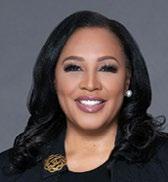
Kim M. Keenan, Esq., joined JAMS after an impressive career as a nationally known trial lawyer, mediator and in-house counsel, as well as a recognized leader among multicultural social justice organizations. Ms. Keenan earned a reputation as a smart, skilled negotiator adept at crafting realistic and sustainable results. She is known for her inclusive style in communicating complex subject matters with clarity across broad stakeholder groups and increasing engagement for shared outcomes. Learn more at www. jamsadr.com/keenan.
Attorney Journals Orange County | Volume 217, 2024
28
We’ve
MEET OUR NEVADA LICENSED ATTORNEYS


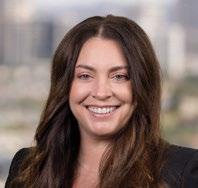











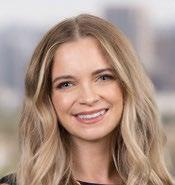

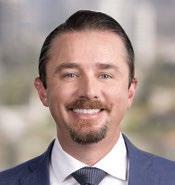



We invite you to visit our Las Vegas office, located across the street from the Courthouse, where we offer attorneys use of our full courtroom to conduct focus groups, mock trials, and witness preparation.
Panish | Shea | Ravipudi LLP attorneys fight every day to obtain justice for our clients and make a difference in their lives. But our expertise in personal injury litigation doesn’t stop at the California state line. With 20 attorneys licensed in Nevada, we have obtained record results in the state. The firm welcomes all joint venture opportunities, including with attorneys who want to stay more actively involved in a case.
877.800.1700 panish.law
STRENGTH BY YOUR SIDE ®
Got Nevada
Covered Too.
CALIFORNIA | NEVADA



5 STAR REVIEWS: Lauren Johnson-Norris, Founder/Head Attorney Practice Areas • Criminal Defense • DUI • CPS/Dependency • Juvenile Crimes • Drug Crime Defense • Orange County Domestic Violence Defense • Restraining Orders • Theft Crimes • Violent Crimes • Vehicle Crimes • Criminal Record Expungement CPS Law Group 19200 Von Karman Ave #400, Irvine, CA 92612 P: (949) 622-5522 F: (949) 622-5511 | info@californiacriminaldefender.com cpslawgroup.com | californiacriminaldefender.com Experienced and Aggressive Orange County Criminal & CPS Defense Lawyers Referral Fees Paid

DON’T MISS OUT ON MILLIONS IN REFERRAL FEES




Auto Defect, Class Action, Personal Injury, Employment & Gov’t Entity
9 - FIGURES
MULTIPLE 8 - FIGURES
MULTIPLE 8 - FIGURES
MULTIPLE 8 - FIGURES
MULTIPLE 8 - FIGURES
MULTIPLE 8 - FIGURES
8 - FIGURES 8 - FIGURES 8 - FIGURES
MULTIPLE 7 - FIGURES
MULTIPLE 7 - FIGURES
MULTIPLE 7 - FIGURES
MULTIPLE 7 - FIGURES

MULTIPLE 7 - FIGURES

MULTIPLE 7 - FIGURES
MULTIPLE 7 - FIGURES
MULTIPLE 7 - FIGURES

MULTIPLE 7 - FIGURES
Nationwide Law Firm BRIAN CHASE OCBA Board of Directors Masters Division - 2024 Chair - OCBA Tort & Trial Section - 2023 Daily ournal Top Plainti Lawyer - 2020–21, 2023 President CAOC - 2015 Trial Lawyer of the Year OCTLA - 2014 Trial Lawyer of the Year CAOC - 2012 Trial Lawyer of the Year Nominee CAALA - 2012 President OCTLA - 2007 Product Liability Trial Lawyer of the Year OCTLA - 2004 PRSRT STD U.S. POSTAGE PAID PERMIT # 100 CLAREMONT, CA









































































 ATTORNEY OF THE MONTH 2024
Joe Nazarian, Founder and Managing Partner of Pathway Law Firm
© Loreen Sarkis
ATTORNEY OF THE MONTH 2024
Joe Nazarian, Founder and Managing Partner of Pathway Law Firm
© Loreen Sarkis

























































